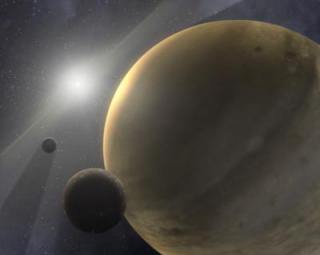Gas Giants Engage in Early Planet Formation
Gas giant planets, such as Jupiter and Saturn, take shape shortly after the birth of their host stars, according to recent research. Data from NASA’s Spitzer Space Telescope suggests that these gas giants either form within the first 10 million years of a star’s life or not at all.
This study provides new evidence supporting the idea that gas giant planets undergo formation in the early stages of a star’s existence, with the typical lifespan of sun-like stars being around 10 billion years. Led by Ilaria Pascucci from the University of Arizona Steward Observatory, a team of astronomers conducted an extensive investigation of gas around 15 sun-like stars, with ages ranging from 3 million to 30 million years.
Utilizing Spitzer’s infrared capabilities, they searched for warm gas in the inner regions of star systems, equivalent to the zone between Earth and Jupiter in our solar system. Additionally, cold gas in the outer regions was probed using the Arizona Radio Observatory’s 10-meter Submillimeter Telescope. The study revealed that all the stars, regardless of age, had less than 10 percent of Jupiter’s mass in gas around them.

This suggests that gas giant planets like Jupiter and Saturn have either already formed in these young solar system analogs or are unlikely to form at all. The presence of gas around a star is believed to play a role in guiding the development of terrestrial (rocky) planets, like Earth, into relatively circular orbits. If Earth had an elliptical orbit instead of a circular one, extreme temperature variations might have impeded the evolution of complex life forms.
While some star systems in the study lack sufficient gas to influence the orbital patterns of developing rocky planets, the observations primarily focused on the effects of gas. It remains unclear if other mechanisms or factors are responsible for guiding terrestrial planets into circular orbits after their formation. Published in the Astrophysical Journal in November 2006, Pascucci’s paper is part of the Spitzer Legacy Science Program called “Formation and Evolution of Planetary Systems” (FEPS), with Michael Meyer, a co-author, serving as the principal investigator of the FEPS program.
The astronomers presented their findings at the 209th meeting of the American Astronomical Society in Seattle, Washington.
This article is republished from PhysORG under a Creative Commons license. Read the original article.
Do not forget to share your opinion with us to provide you with the best posts !



0 Comments